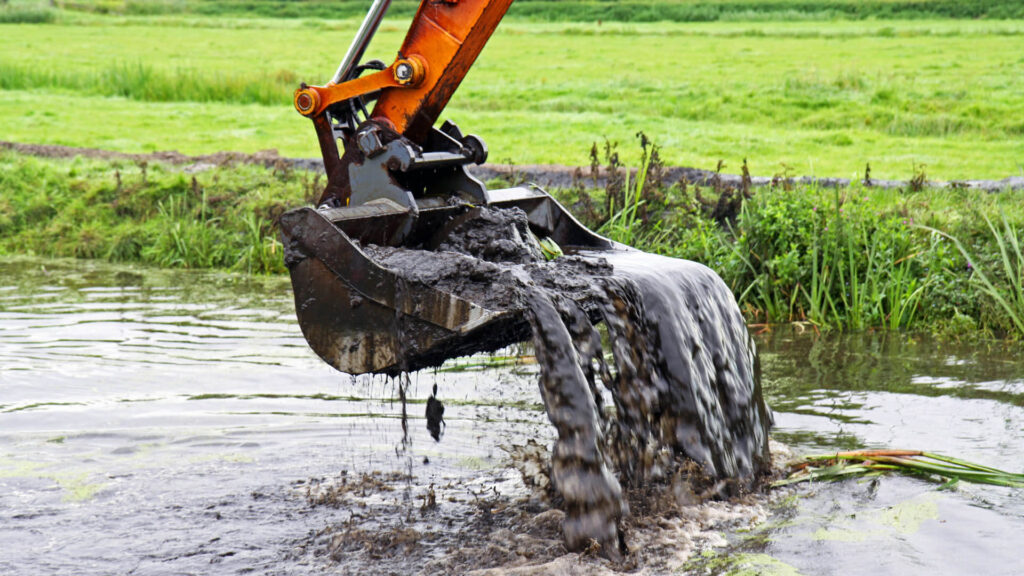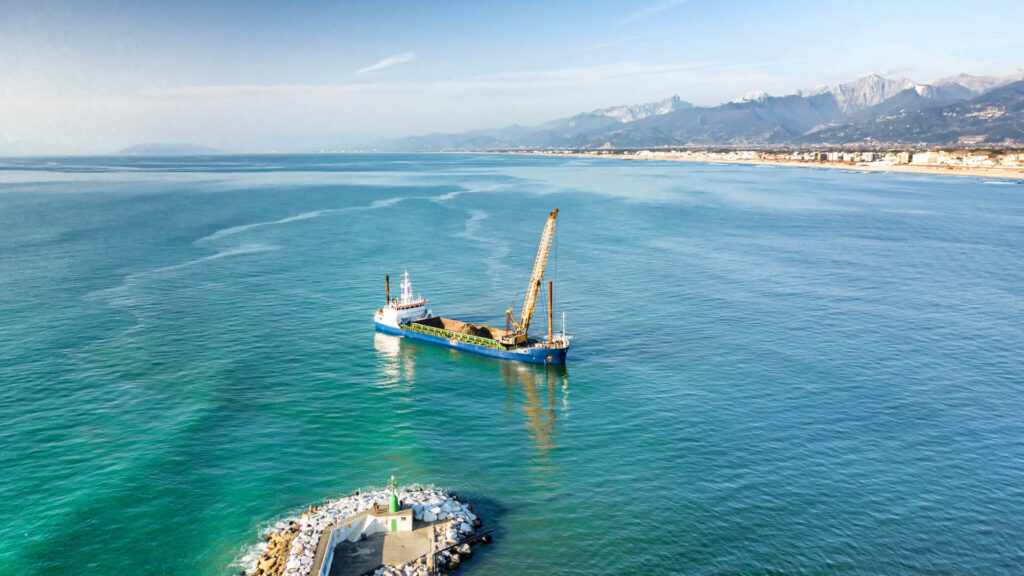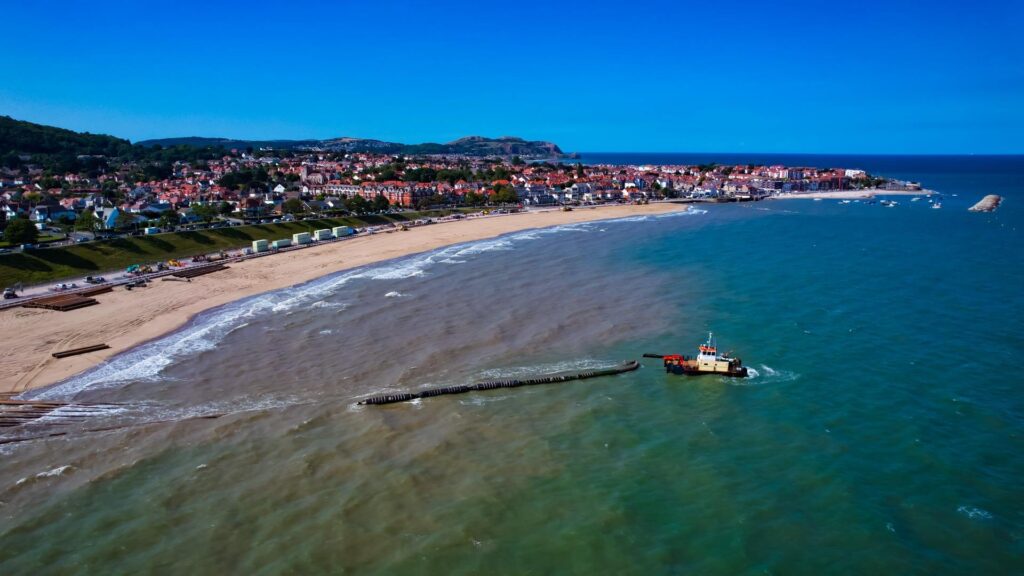Dredging is the process of removing sediment, debris, and other materials from the bottom of bodies of water such as rivers, lakes, and harbors. The purpose of dredging is to maintain or increase the depth of waterways, allowing for safe navigation of vessels and efficient water flow. It also plays a key role in environmental restoration, land reclamation, and resource extraction. Understanding what is dredging is essential for managing and maintaining aquatic infrastructure and protecting ecosystems from sediment buildup and pollution.
Dredging is essential for maintaining the health and functionality of waterways and supporting infrastructure projects. Over time, sediment accumulation can block channels, reduce water quality, and disrupt marine ecosystems. By removing this sediment, dredging helps prevent flooding, improves water circulation, and restores natural habitats.
Various industries depend on dredging to support their operations. Construction companies rely on dredging for foundation work and land reclamation. Mining operations use dredging to extract valuable materials like sand, gravel, and minerals. Environmental agencies use dredging to clean up contaminated sediments and restore aquatic environments. Understanding what is dredging and its importance in these industries helps operators choose the right approach for different project needs. To effectively manage dredging projects, a professional dredging company provides the expertise and equipment needed to handle complex operations. Knowing what is a dredger and selecting the right type of equipment is crucial for maximizing efficiency and minimizing environmental impact.
What Is Dredging?

Definition and Process
What is dredging? Dredging is the process of removing sediment, debris, and other materials from the bottom of bodies of water such as rivers, lakes, harbors, and oceans. Over time, natural sediment accumulation can reduce water depth, obstruct navigation, and disrupt aquatic ecosystems. Dredging helps to restore and maintain the depth and health of these water bodies, ensuring that they remain navigable and functional for commercial, industrial, and environmental purposes.
The dredging process typically involves using specialized equipment to loosen, collect, and transport sediment. What is a dredger? A dredger is the machine used to perform dredging operations. It can be a vessel or stationary platform equipped with suction pipes, cutter heads, or buckets designed to handle different types of sediment. Modern dredgers use advanced GPS, sonar, and remote control systems to enhance precision and efficiency.
Historically, dredging was performed manually using simple tools like buckets and shovels. Over time, technological advancements have led to the development of more sophisticated dredgers, including cutter suction dredgers, trailing suction hopper dredgers, and auger dredgers. These machines can handle larger volumes of sediment, operate in deeper waters, and work with greater accuracy, improving overall efficiency.
Purpose of Dredging
The primary purpose of dredging is to maintain navigable waterways. Ports, harbors, and shipping channels must remain deep enough to accommodate large vessels. Without regular dredging, sediment buildup can obstruct navigation, delay shipping schedules, and increase the risk of grounding. Understanding what is dredging is essential for managing waterway depth and ensuring smooth vessel operations. Dredging ensures that commercial and recreational vessels can operate safely and efficiently by removing excess sediment and maintaining clear and deep passageways.
Land reclamation and harbor deepening are also major reasons for dredging. Coastal cities and industrial zones often expand by reclaiming land from the sea. This involves dredging to extract and reposition sediment, creating new land for infrastructure development.
Environmental restoration is another key purpose of dredging. Pollution and industrial runoff can contaminate sediment, posing risks to aquatic ecosystems. Dredging removes these contaminants, helping to restore natural habitats and improve water quality.
Resource extraction is an important economic use of dredging. Mining companies rely on dredging to extract valuable materials such as sand, gravel, and minerals from riverbeds and ocean floors. A professional dredging company will often specialize in resource recovery, using customized equipment to maximize efficiency and minimize environmental impact.
Understanding what is dredging and selecting the right type of equipment is essential for achieving project goals, maintaining waterway health, and ensuring long-term environmental sustainability. A skilled dredging company can assess project needs and deploy the appropriate dredger to deliver effective results.
What Is a Dredger and How Does It Work?

Definition of a Dredger
Understanding what is dredging involves knowing the equipment used to perform the task. What is a dredger? A dredger is a specialized machine used to remove sediment, debris, and other materials from the bottom of bodies of water such as rivers, lakes, harbors, and oceans. Dredgers play a crucial role in dredging operations, helping to maintain navigable waterways, support infrastructure projects, and recover valuable materials like sand and minerals. The type of dredger used depends on the nature of the project, the type of sediment being removed, and the environmental conditions.
A dredger typically works by loosening the sediment using mechanical or hydraulic means and then transporting the material through a pipeline or conveyor system for disposal or reuse. Understanding what is dredging and what is a dredger is essential for optimizing dredging efficiency. Modern dredgers are equipped with advanced GPS and sonar technology to improve precision and efficiency during operation. A professional dredging company will assess project requirements and select the appropriate dredger type to ensure maximum efficiency and minimal environmental impact.
Types of Dredgers
There are several types of dredgers, each designed for specific operational needs and environmental conditions. Choosing the right dredger is essential for achieving optimal results.
Cutter Suction Dredgers
Cutter suction dredgers are widely used for large-scale projects involving hard materials such as clay, gravel, and compacted sand. They feature a rotating cutter head that breaks up sediment before suctioning it through a pipeline. Cutter suction dredgers are highly effective for harbor deepening, land reclamation, and mining operations.
Trailing Suction Hopper Dredgers
Trailing suction hopper dredgers are ideal for deepwater dredging and large-volume material removal. They use a suction pipe with a drag head to collect sediment, which is stored in an onboard hopper before being transported for disposal. These dredgers are commonly used in offshore dredging and channel maintenance.
Bucket Ladder Dredgers
Bucket ladder dredgers use a continuous chain of buckets to dig and lift sediment. They are highly effective for mining and deep excavation, especially when dealing with hard or compacted materials. This type of dredger is known for its precision handling of high volumes of material.
Auger Dredgers
Auger dredgers are designed for precise and controlled sediment removal. They feature a rotating auger that grinds and lifts sediment with minimal turbidity, making them ideal for environmental dredging and wetland restoration. A dredging company may recommend auger dredgers for projects requiring minimal environmental disruption.
Selecting the right dredger is key to understanding what is dredging and achieving project success. A skilled dredging company can help determine the most suitable equipment based on project goals, sediment type, and environmental conditions.
Key Factors Affecting Dredging Efficiency

Dredging Depth and Material Composition
One of the most critical factors affecting dredging efficiency is the depth of the dredging site and the type of material being removed. Understanding what is dredging and how different dredging systems work helps in selecting the right equipment for specific project requirements. Dredging depth influences the suction power and efficiency of the dredging system. Deeper dredging requires more powerful pumps and greater structural support to maintain consistent flow and sediment transport. Knowing what is a dredger and choosing the correct type based on depth and material composition ensures that the operation runs smoothly and efficiently.
The type of material also significantly impacts efficiency. Understanding what is dredging involves recognizing how different materials respond to dredging methods. Sand and gravel are relatively easy to dredge, but clay and silt require stronger suction and specialized cutter heads due to their cohesive nature. Rock and compacted sediment are the most challenging to dredge and often require cutter suction dredgers or bucket ladder dredgers to break up the material before removal. Knowing what is a dredger and its capabilities helps in selecting the most effective equipment for each type of material. A professional dredging company will evaluate the project’s material composition and depth to recommend the most suitable dredging method.
Pump Power and Flow Rate
Pump power and flow rate directly influence the dredging system’s ability to handle sediment transport over long distances. Matching the pump size and type to the sediment composition and project scale ensures that material is removed and transported efficiently without causing blockages or excessive wear.
A high flow rate increases suction power, allowing the dredge to collect material more quickly. However, if the flow rate is too high, it can create turbulence and reduce material recovery efficiency. Conversely, low flow rates may result in incomplete sediment removal and increased downtime. Skilled operators understand the balance between pump power and flow rate, allowing them to maximize efficiency. An experienced dredging company will assess the project’s unique requirements and select the right pump configuration to optimize performance.
Pipeline and Transport Systems
The efficiency of a dredging operation also depends on the pipeline and transport system. Properly sized pipelines and secure alignment are essential for maintaining consistent material flow and preventing blockages. Misaligned or undersized pipelines can cause pressure loss, reduced suction, and increased system wear.
Pipeline blockages can significantly reduce efficiency and cause costly downtime. Regular inspection and maintenance of the pipeline system help prevent these issues. A professional dredging company will recommend high-quality materials and proper pipeline alignment to minimize operational disruptions.
Operator Skill and Experience
The operator’s skill and experience are key factors in dredging efficiency. Operators need to understand the nuances of dredging, including how to balance suction power, control flow rates, and handle different sediment types. A trained operator can quickly identify operational issues and adjust equipment settings to maintain consistent performance.
What is a dredger without a skilled operator? Even the most advanced dredging equipment requires experienced handling to operate at peak efficiency. Operators who are well-trained and knowledgeable about dredging can minimize downtime, reduce equipment wear, and improve overall project success. A professional dredging company invests in operator training to ensure that its equipment is used effectively and efficiently.
Operational Challenges in Dredging

Abrasive Wear and Corrosion
One of the biggest challenges in dredging operations is the abrasive nature of the sediment being removed. Sand, gravel, and rock fragments can cause significant wear on dredging equipment, including the pump, cutter head, and pipeline. The higher the sediment’s hardness and coarseness, the more quickly components wear down. Water salinity also accelerates corrosion, especially in saltwater dredging operations. Exposure to salt and minerals can weaken metal surfaces, leading to cracks and structural failure over time.
To prevent these issues, dredger components must be coated with wear-resistant materials and protective coatings. Cathodic protection, which involves using sacrificial anodes to prevent metal corrosion, is also an effective strategy. Regular maintenance and inspection of the dredger help identify early signs of wear and corrosion, allowing for prompt repairs and longer equipment lifespans. A professional dredging company will often recommend specialized coatings and corrosion-resistant materials to handle the demanding conditions of dredging projects.
Environmental Impact and Compliance
Dredging can have a significant environmental impact if not carefully managed. Removing sediment from the bottom of a body of water stirs up fine particles, increasing turbidity and reducing water quality. High turbidity can disrupt aquatic ecosystems by reducing sunlight penetration and affecting the health of fish and plant life.
Dredgers are equipped with turbidity monitoring systems and sediment containment technologies to minimize environmental impact. Operators must also carefully manage the flow rate and depth of dredging to minimize sediment disturbance. Compliance with environmental regulations is also essential. A professional dredging company ensures that all dredging activities meet local and international environmental standards, secures the necessary permits, and follows best practices to protect marine ecosystems.
Downtime and Equipment Failures
Downtime caused by equipment failure is a major challenge in dredging operations. Common causes include clogged pipelines, pump failures, and mechanical breakdowns. A poorly maintained dredger can quickly lose suction power and efficiency, resulting in costly delays.
Preventative maintenance, including regular cleaning, lubrication, and part replacement, helps reduce downtime. Skilled operators who understand what is dredging and how to troubleshoot equipment issues play a key role in maintaining smooth operations.
Weather and Water Conditions
Weather and water conditions also affect dredging efficiency. Strong currents, tides, and storms can make it difficult to maintain the dredger’s position and consistent suction. Operators must adjust dredging speed and positioning to compensate for changing conditions. An experienced dredging company will assess environmental risks before starting a project and develop strategies to handle challenging weather conditions effectively.
Conclusion
Understanding what is dredging and the key factors that influence its efficiency is essential for successful operations. Factors such as dredging depth, material composition, pump power, and operator skill all play a critical role in determining the success of a dredging project. Selecting the right equipment is equally important—knowing what is a dredger and which type is best suited for specific conditions helps maximize efficiency and minimize downtime.
An experienced dredging company can assess project requirements and recommend the most effective dredging strategy. Whether it’s a cutter suction dredger for hard materials or a trailing suction hopper dredger for large-scale deepwater operations, working with experts ensures that the right equipment is used for the job.
Investing in high-quality equipment and following a proactive maintenance plan helps reduce wear and operational interruptions, leading to greater long-term efficiency. By understanding what is dredging and how to optimize each aspect of the process, operators can improve performance, lower costs, and ensure consistent project success.




